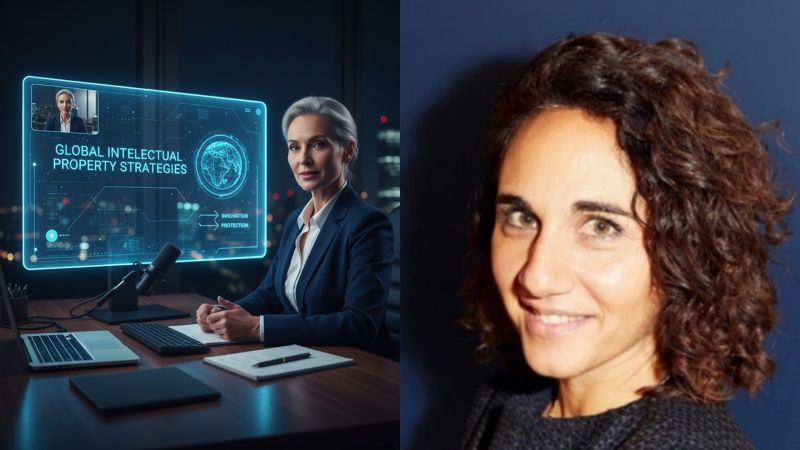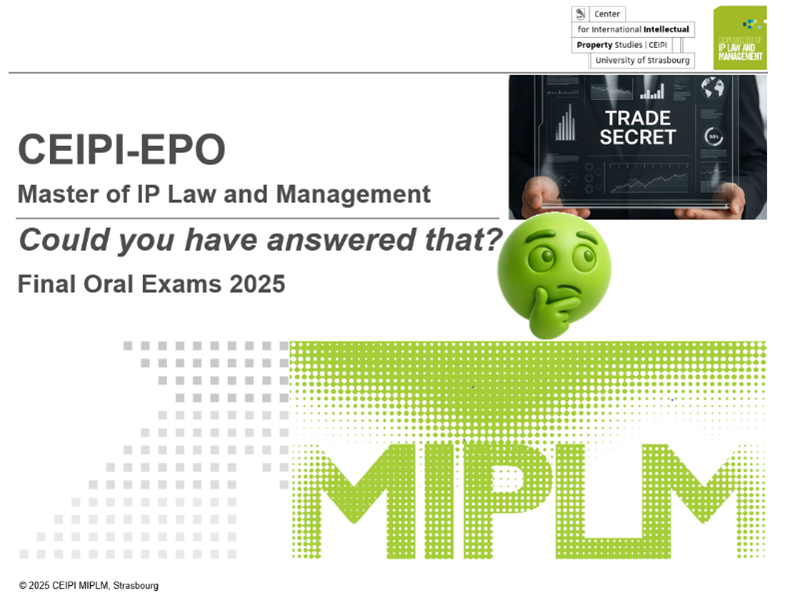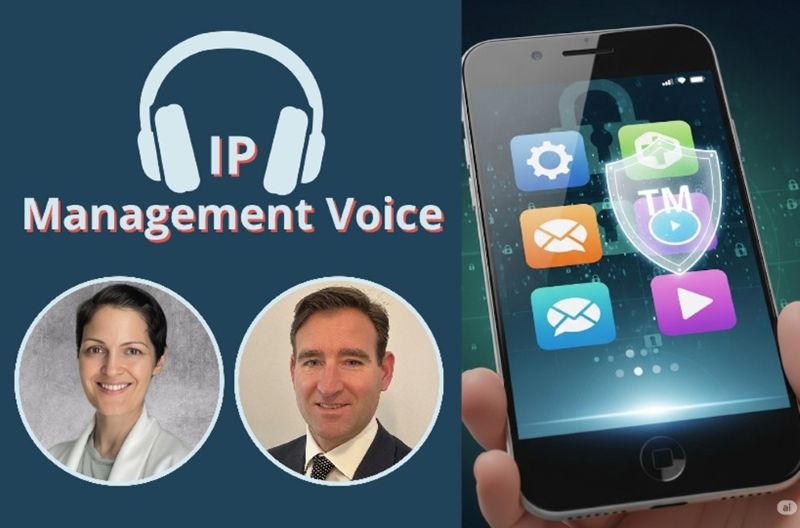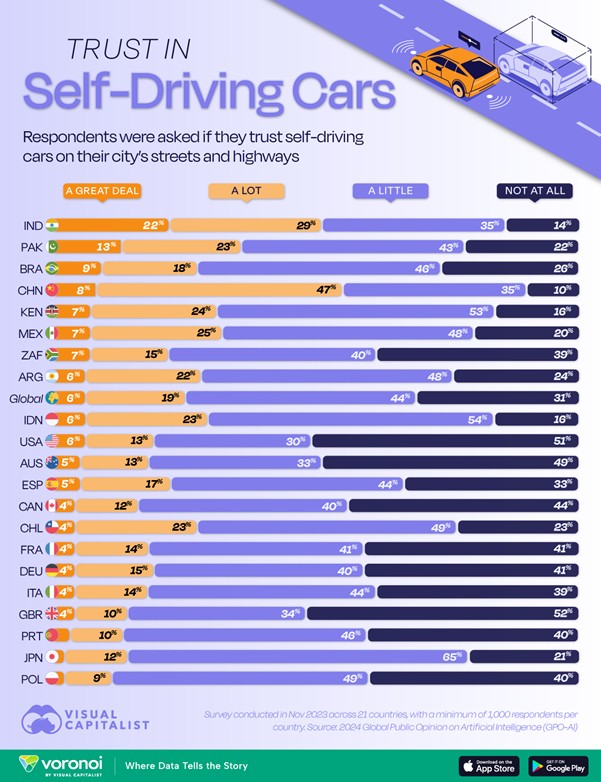Awareness building for the role of IP 🎯 IP Management Pulse #46
Many IP experts in the IP community at I3PM, the HTB-EPO initiative, and IP offices and institutions in national and regional innovation systems have asked Prof. Dr. Alexander Wurzer: “Where can you be sure not to miss any important IP management content?” In fact, you have to follow a number of interesting feeds to really keep up with the global developments around IP management. To make this easier he decided to offer his own personal newsletter for IP management. Here you can find the latest issues in the archive and also subscribe. A fresh read with all important IP Management content will be sent to the subscribers every second Thursday at 7:00 (CET), so that they can start the day informed.
The next newsletter will cover the following topics:
Awareness building for the role of IP in new business development
Some still see IP as the man pretending to stop a subway — dramatic, but irrelevant to how the business moves. Yet in reality, IP defines how far, how fast, and on whose tracks that business can go. That’s why IP professionals must not only manage rights, but also communicate how those rights shape markets and value.
👉️ To the LinkedIn post
IP litigation in China
New Chinese legislation is aiming to support the fight against trademark squatters. But it may cause litigation to become prohibitively expensive for small companies. More in the LinkedIn post.
👉️ To the LinkedIn post by Paolo Beconcini
Misconceptions about trade secret management
Trade secrets are valuable, but also a fragile type of IP. Cases such as Olaplex vs L’Oréal show how quickly things can become expensive for SMEs, when they do not master trade secret management. More in the LinkedIn post.
👉️ To the LinkedIn post by John Pryor
Opt-out vs opt-in copyright policy for AI models
With the launch of their new video model Sora 2, OpenAI introduced a novel policy for copyright holders. Instead of actively allowing the use of their material for AI model training, the rights holders are asked to opt out of it. More in the LinkedIn post.
👉️ To the LinkedIn post by Masaki Kataoka
IP as basis for international technology transfer
International technology transfer is a tool to support the economic growth of smaller or emerging economies. But to succeed, companies need to be skilled in using the advantages of the local IP system. More in the LinkedIn post.
👉️ To the LinkedIn post by Nguyen Hoa Binh (Bill) 阮和平
Whom to follow
Alessandra (Ale Martins) Monteiro Martins is a senior consultant in Information Security, Data Privacy, and Technology Governance with working experience all over Latin America. She shares on her LinkedIn feed information about AI regulation and risk mitigation as well as cyber security for SMEs. If you do not want to miss any information about upcoming cyber security-related webinars, I suggest to follow her.
Daniel Greif is Director Southeast Asia and Senior Trademark Attorney at S&O IP with a focus on trademark law in Southeast Asia. He shows on his LinkedIn feed the developments in the various jurisdictions of the region and shares success stories of anti-counterfeiting activities. If you are active in the region, I suggest to follow him.
Resource Hub
Digital marketing: LinkedIn Essentials to boost your Profile
These insights are designed for IP experts who want to make LinkedIn work for their business — not just as a résumé, but as a professional landing page. Whether you’re building your visibility, attracting clients, or simply refining your profile, this is your go-to resource to get started.
Business Development: From IP Awareness Building to Business Development
This course will equip you with skills in market intelligence gathering, identifying and analysing trends, conducting thorough client needs assessments, applying interdisciplinary knowledge, embracing continuous learning, performing economic analysis of IP, and leveraging digital literacy for IP practice.
Speaking & webinars: amplifying your voice
Speaking engagements (whether webinars, panel discussions, or conference talks) are among the most powerful tools for IP experts to build authority and trust. When you speak, you’re not just sharing expertise. You’re shaping how people perceive you: as someone confident, informed, and willing to lead a conversation rather than just follow it.
Speaking is not a performance, it’s a dialogue. It’s a way to let others experience your expertise and to build trust through clarity, relevance, and presence.
If you see public speaking as part of your professional growth, start by asking yourself:
What’s one idea I could explain today that would make my clients or peers see my expertise in a new light?
That single idea, clearly expressed, can be the start of your most powerful branding tool yet, your voice.
Could you have answered that? Cracking the CEIPI EPO MIPLM’25 Exam on trade secret management in innovation-driven companies
Task 24 of the CEIPI-EPO MIPLM’25 exam challenges candidates to explain the management of trade secrets in innovation-driven companies. The oral exam question presented to the MIPLM candidates is based on a realistic and increasingly relevant challenge: A German sensor manufacturer, SensoTrak GmbH, is developing high-performance sensing technologies that combine chemical formulations, embedded algorithms, and calibration data. While these elements are core to product differentiation and commercial success, they are either not patentable or would require disclosure that could jeopardize their competitive edge.
Why App Icons Are More Than Just Design
App icons may be tiny, but they carry enormous brand significance. As the digital storefront of any application, they’re often the first and most frequent point of contact between users and brands. In this episode, Zeeger Vink and Maria Boicova-Wynants argue that app icons have evolved from aesthetic elements into core assets that deserve strategic legal protection.
Software patents in the automotive industry
The automotive industry experiences a dramatic shift from mechanical engineering towards digitalization. And this shift is most visible in the area of self-driving cars. Here, a critical factor next to technology readiness is customer acceptance, which is at the moment highest in emerging markets.
Protecting those new digital innovations remains challenging for traditional car manufacturers and thus becomes a field full of opportunities for startups in that sector. Read more on the dIPlex page featuring software patent expert David Perkins.
Cyclones, Courts, and Competitive Advantage: Dyson’s IP-Driven Business Model
James Dyson’s bagless vacuum cleaner is a landmark story in IP management. Frustrated by clogged dust bags, Dyson invented cyclonic separation and protected it with a layered patent strategy. These patents, carefully drafted for enforceability, secured investment, justified premium pricing, and enabled global expansion. Freedom-to-operate analyses minimized legal risks, while aggressive enforcement against Hoover, Vax, and Samsung demonstrated the commercial power of litigation.






